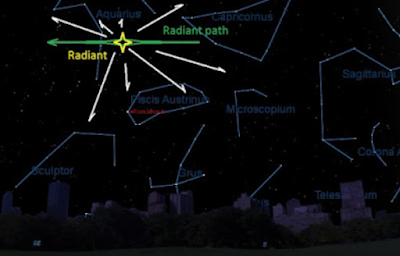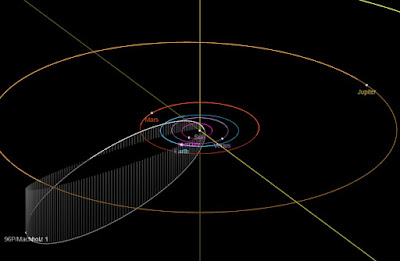Bolinas-type figurines are clay figurines from the Middle Preclassic (1000-350 BC) and Late Preclassic (350 BC-250 AD) periods of Mesoamerica, known from a number of sites along the Pacific coasts of Guatemala and El Salvador. They get their name from the Finca Bolinas Ranch in El Salvador, where the first examples were discovered in the mid-twentieth century. A total of 95 figurines were unearthed at Finca Bolinas, although not by an organised archaeological excavation, so much of the context in which they were originally buried has been lost.
Of these 95 figurines, 93 were female and only two were potentially male. They were depicted either standing or sitting with their legs parted. The largest figurines were over 20 cm tall. The figurines were made from a cream or reddish-brown material, were evenly fired, and then smoothed or polished. Most of the figurines from Finca Bolinas have traces of either white or orange slips (some have both), and a few have traces of black paint. Most wear some kind of jewellery, such as anklets, bracelets, necklaces, or earspools, and most have hair styles, including simple buns, curls, braids, and more elaborate coiffures. Some of the figurines which lack earspools have holes in their earlobes, which have been interpreted as possible attachments for earspools made from a different material, such as jade. Many of the figurines are naked, others have coverings on their lower bodies, leaving their chests exposed, although breasts are either very small or absent completely. Most figurines are cast in a single piece, but some have protrusions and sockets which enable articulated heads or limbs to be attached.
Bolinas-type figurines were also found at the monumental Kaminaljuyu site in Guatemala City, which was excavated in the 1940s and 1950s by the Carnegie Institution, and later excavations at Vista Hermosa in Guatemala, and Santa Leticia, and Ataco Zapotitán Valley in El Salvador, though all of these figurines were fragmentary in nature, leading the archaeologists studying them to conclude that these were mundane domestic objects, possibly toys for children, which were deposited on household middens at the end of their usefulness, and then sometimes recycled into core-fill for monumental structures.
In 2012 an excavation at Tak’alik Ab’aj on the Pacific-facing piedmont of the western Guatemalan highlands uncovered a burial with lavish funerary offerings comprised several high-quality ceramic vessels, jade jewellery, including a four-string necklace with a celtiform pendant in the form of an avian personage, and, in one corner, six broken but complete Bolinas figurines. This burial was dated to the Nil 2 ceramic phase of the late Middle Preclassic Period, or between 350 and 100 BC.
The Bolinas figurines from Tak’alik Ab’aj were placed overlapping one-another, arranged along a north-south axis. All were standing naked females, placed with their arms band and their hands on their stomachs, their eyes open, and their lips parted to reveal their teeth. The smallest figurine was 273 mm tall, the largest 424 mm. One had an articulated head, which could be turned to face to the sides, two had apparently been painted with elaborate black markings. All were capable of standing, despite having distinctively small feet.
Figurines from Tak’alik Ab’aj with elaborate black markings on their backs. Schieber de Lavarreda (2016).
In a paper published in the journal Antiquity on 5 March 2025, Jan Szymański and Gabriela Prejs of the Faculty of Archaeology at the University of Warsaw, describe a set of five Bolinas figurines from the top of a large monumental structure at San Isidro, a large Middle to Late Preclassic site in the Department of Sonsonate, western El Salvador, during field work in 2022.
The layer from which the figurines was recovered has been dated by ceramic typology and radiocarbon assays to between 410 and 380 BC, slightly older than the Tak’alik Ab’aj site. The five figurines were found at the southern end of the excavated area. Three of the figurines are approximately 30 cm high, and made of a fine, cream-coloured material, while the remaining two are smaller, at 18 and 10 cm, and made of a courser, orange-brown paste. All had apparently been covered by a white slip, which can be seen best on the legs and lips, patches of red slip can be seen on the backs of the figurines. The three large figurines have articulated heads, with a protruding neck which fits into a socket on the base of the head. Each of the heads has a pair of holes drilled into the top, while the necks have a horizontal hole and a vertical groove on each side, which would have allowed a string to be passed through, holding the head in place; this is identical to the means of articulation seen at Tak’alik Ab’aj.

Five figurines from the San Isidro deposit. Scale is in centimetres. Julia Przedwojewska-Szymańska in Szymański & Prejs (2025).
The three larger figurines lack any hair or jewellery, while the two smaller figurines have locks on their foreheads and earspools; the smallest figurine also has bracelets and what appears to be a necklace on the chest. This smallest figurine has its hands beneath its chin, while those of all the others lie on their abdomens. Both small figurines and two of the females are interpreted as female, while one of the larger figurines is interpreted as male, on the basis of its more elongated torso and shorter, thinner hips, and an incised linear pattern on the face, which appears to represent tattoos or scarification. If identified ccorrectly, this is the most complete male Bolinas figurine discovered to date.
Protrusion and socket allowing for articulation of the head seen in all three large figurines. Julia Przedwojewska-Szymańska in Szymański & Prejs (2025).
All of the figurines were discovered within an area of 0.6 m², at a depth of less than 50 cm below the surface. The figurines were all orientated 15° north of east-west, except the smallst, which was orientated 15°east of north-south. The larger figurines are also orientated with their feet along a line 15°east of north-south, parallel to the axis of the smallest figurine. The northernmost figurine is one of the large females, face down, with her head to the west. South of this, the second large female figurine lies face up with her head to the east. Next the smallest figurine lies face down with her head to the north (and the second female figurine), then the larger of the two small figurines, face up and head to the east, parallel to the two large figurines in this orientation, but without her feet on the same line. Finally, the large male figurine lies on his back with his feet to the west and head to the east, parallel to the other figurines in this position, with his feet on the line as the two large female figurines.

Head of the male figurine with tattoos or scarification. Width 55mm. Julia Przedwojewska-Szymańska in Szymański & Prejs (2025).
The figurines appear to have been deliberately placed in a planned out way, however, Szymański and Prejs note that the site was excavated on freely-accessible agricultural land (i.e. not a secure site) over a period of several days. Furthermore, the spot where the figurines were found was covered by a Bullhorn Tree, Acacia cornigera, with roots passing through the figurine-containing area, which may have moved their position over time.
Reconstructed topography of the tableau as it appeared in situ. Julia Przedwojewska-Szymańska in Szymański & Prejs (2025).
The larger dolls, with their movable heads, invite comparison to modern dolls. However, clay is a poor material choice for toys, and the long limbs of the figurines would seem likely to break quickly in any form of play, leading Szymański and Prejs to conclude that the purpose of the figurines is more likely to have been artistic or ritual. They build upon this to suggest that the movable heads imply that they may have been used as marionettes or puppets, either to act out some ritual performance, or arranged in some form of tableaux.
The Bolinas-type figurines from Tak’alik Ab’aj were also apparently arranged in a form of tableaux, with figurines placed in pairs on the cardinal directions along a scaled-down horizon circle. This led archaeologist Christa Schieber de Lavarreda to propose that the figurines were used in an elaborate ritual at the end of funerary rights, in the form of a dance representing the movements of the Sun and the cycle of life.
Choreography of the ancestral conception of the world governed by the cardinals and the sacred circle of life emerging from death, personified in the cycle of corn and the sun represented by the figurines of the 'Las Manecas' Offering from Burial No. 2 of Tak’alik Ab’aj (inserted in the landscape to the southwest at dusk, seen from Mound 5 of Tal’alik Ab’aj). Tak’alik Ab’aj National Archaeological Park. Schieber de Lavarreda (2016).
The figurines from San Isidro resemble those from Tak’alik Ab’aj in that they will stand upright unaided, which raises the possibility that these figurines were also used to act out some sort of scene before burial. The figurines are broken in a number of places which do nor appear to be obvious week points, which may indicate that they were deliberately broken before being buried, although Szymański and Prejs observe that they are likely to have been made in more than one piece and then assembled, which would have created week points in less obvious places.
The arrangement of the figurines at San Isidro is clearly non-random, and therefore presumably had some significance to the people who deposited them. Notably, all of the figurines, if returned to an upright position would have faced to the west, except for the smallest, which may have faced north, or may have been disturbed by the growth of the tree roots. The west, in Mesoamerican cosmography, is generally considered to be the realm of death (although this understanding is largely derived from Mayan culture). This may indicate that the placement of the San Isidro figurines was part of a funerary right, despite the absence of any Human remains at the site.
San Isidro is a complex of structures; figurines were recovered from the top of a mound designated Cerrito 1, which lies on the eastern side of a plaza. On the western side of this plaza lies a smaller structure, designated Trapiche 3, from which a large, unmarked, stela (slab) was recovered in 2018. Facing in a 15°-north-of-west direction, the San Isidro figurines would have looked directly at the Trapiche 3 mound and its stela.
Plan view of the centre of San Isidro based on photogrammetry. Joachim Martecki in Szymański & Prejs (2025).
The three large figurines from San Isidro are naked, which is not unusual in Bolinas figurines, lack any jewellery, although the large holes in the ears may have served as attachments for earspools, and all lack hair, which is more unusual. It is possible that all these features were made of perishable material and have perished since their burial.
Plain stela found atop the Trapiche 3 structure at San Isidro in 2018. Raul Cea in Szymański & Prejs (2025).
All the San Isidro figurines have their mouths open, which may imply that they were intended to be depicting people engaged in speech or song. The smallest figurine also has its hands raised to its chin, which is harder to interpret. Hands covering the mouth might indicate the keeping of secrets, but this is not the case. Possibly the figurine was originally intended to be holding a whistle or ocarina, or possibly just a food item. White kaolin has been found in the mouths of all five figurines, which might relate to some form of feeding ritual.
The heads of the larger figurines appear to have been adjustable rather than truly movable, and it is unclear how this would have been used. Possibly the heads were placed in different positions at different points in the ritual. Alternatively, the figurines may have had a longer life cycle, being used in multiple rituals before their eventual burial, leading to a need for adjustable, or even replaceable, heads for different rituals.
The San Isidro figurines are only the second Bolinas figurines discovered in situ, which limits the amount which should be inferred from them. What can be stated with some confidence is that their placement is non-random, although the purpose of the way in which they are arranged is far from certain. The presence of figurines in a prone (face down) position is curious. If these figurines were intentionally placed in this position, then was there some significance to it. Burial of Humans in a prone position is also known from Mesoamerica, including Preclassical El Salvador, although this is rare, and the reason behind it is unknown.
It is also unclear whether the figurines represent actual people. It is possible that the male figurine represents a ruler or other important figure, and that the two large female figurines represent wives (one of whom might have pre-deceased him, indicated by having her figurine placed face down) and the two smaller figurines daughters, again, with one placed face down, potentially representing having predeceased her father. Alternatively, the figurines might represent household deities similar to the Roman lares and penates, or possibly anthromorphised depictions of cultural concepts, such as the statues of justice seen on court houses in many parts of the world today. Another possibility is that they are intended to be ritual servants for the afterlife, similar to the ushabti figurines placed in tombs by the Ancient Egyptians. Szymański and Prejs suggest that the markings on the face of the male figurine may indicate that he represents an actual person, while they are less certain about the more generic female figurines.
As well as the figurines, there are other items which were found at both Tak’alik Ab’aj and San Isidro, such as miniature jade celtiform pendants representing avian personages, and tubular and disk beads made using similar techniques. Nevertheless, the Tak’alik Ab’aj site was clearly a burial, while no evidence of Human remains, or even a place where they might once have been placed, has been found at San Isidro. At both sites, the figurines were clearly laid out in a specific arrangement, but the arrangements were different, possibly providing further evidence that the purpose of the two sites was different.
Szymański and Prejs believe that ritualised puppet-theatre was practiced in late Middle Preclassic and early Late Preclassic periods in south-eastern Mesoamerica. They suggest that at least some of the figurines were interchangeable in purpose, generic enough that different costumes and heai pieces would have allowed them to undertake different roles in different performances, while other figurines may have been more specific in their purpose.
See also...







.gif)

.jpg)
.jpg)
.jpg)




.jpg)


.jpg)







.gif)
.jpg)



.jpg)





.jpg)
.jpg)
.jpg)

.jpg)















